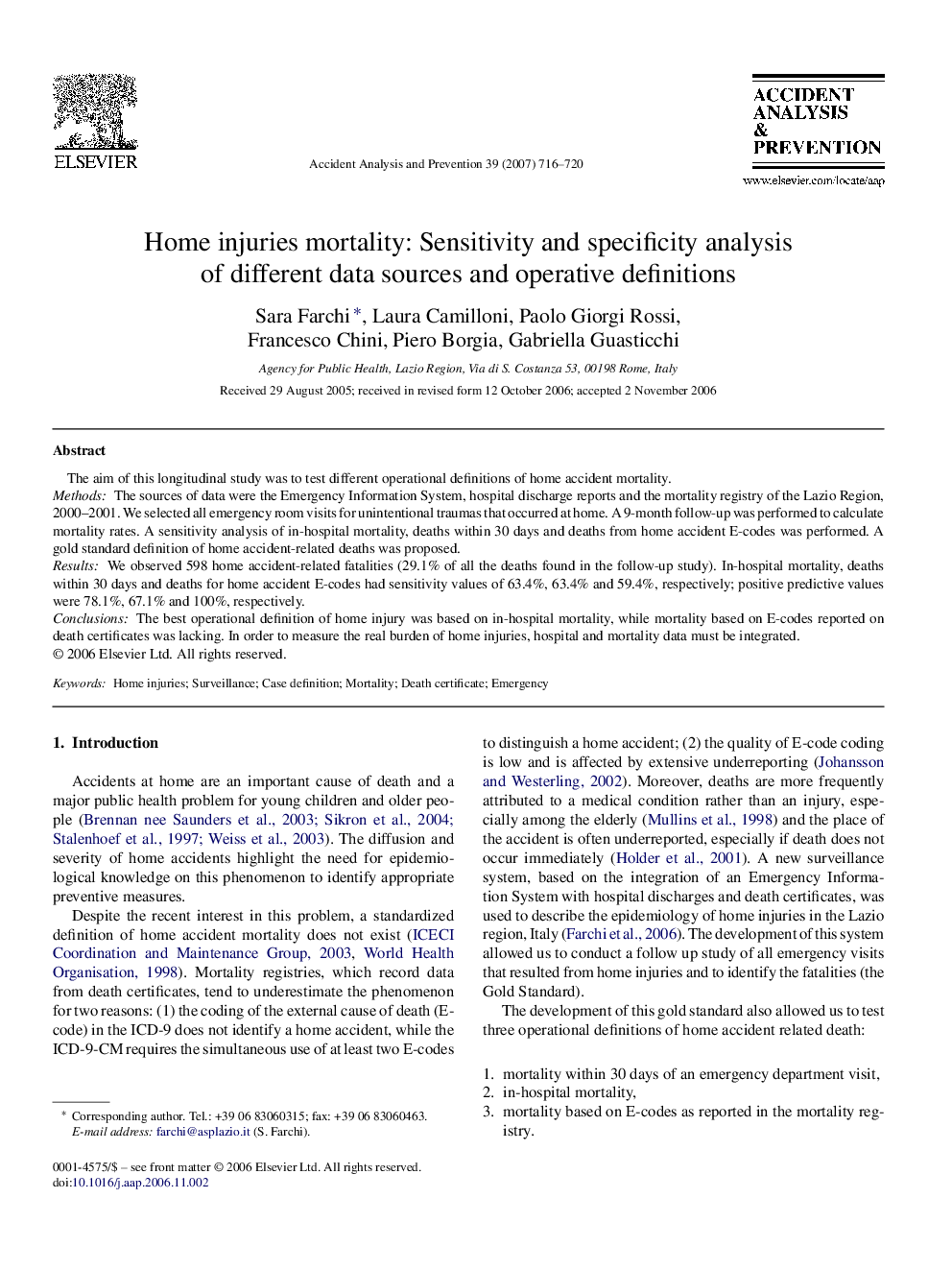| کد مقاله | کد نشریه | سال انتشار | مقاله انگلیسی | نسخه تمام متن |
|---|---|---|---|---|
| 573439 | 877399 | 2007 | 5 صفحه PDF | دانلود رایگان |

The aim of this longitudinal study was to test different operational definitions of home accident mortality.MethodsThe sources of data were the Emergency Information System, hospital discharge reports and the mortality registry of the Lazio Region, 2000–2001. We selected all emergency room visits for unintentional traumas that occurred at home. A 9-month follow-up was performed to calculate mortality rates. A sensitivity analysis of in-hospital mortality, deaths within 30 days and deaths from home accident E-codes was performed. A gold standard definition of home accident-related deaths was proposed.ResultsWe observed 598 home accident-related fatalities (29.1% of all the deaths found in the follow-up study). In-hospital mortality, deaths within 30 days and deaths for home accident E-codes had sensitivity values of 63.4%, 63.4% and 59.4%, respectively; positive predictive values were 78.1%, 67.1% and 100%, respectively.ConclusionsThe best operational definition of home injury was based on in-hospital mortality, while mortality based on E-codes reported on death certificates was lacking. In order to measure the real burden of home injuries, hospital and mortality data must be integrated.
Journal: Accident Analysis & Prevention - Volume 39, Issue 4, July 2007, Pages 716–720